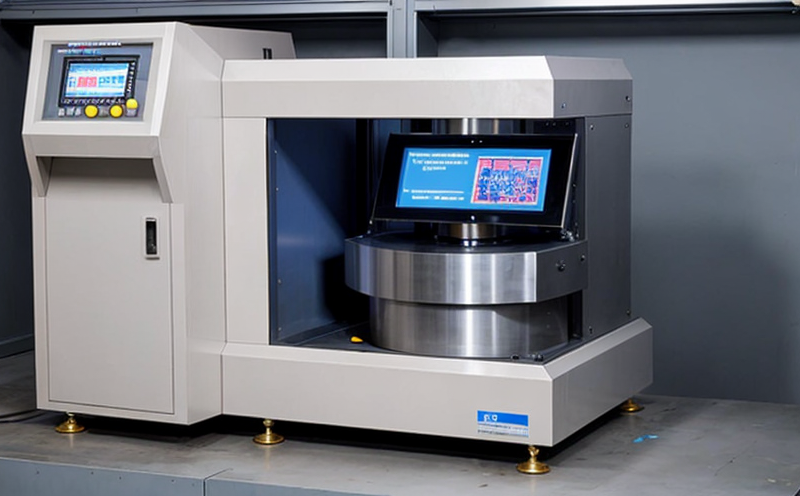ASTM D2126 Dimensional Stability Testing of Rigid Materials
The ASTM D2126 standard specifies a method to determine dimensional stability, which is crucial for ensuring the reliability and accuracy of rigid materials used in additive manufacturing (AM) and 3D printing processes. This testing is vital for maintaining product quality and consistency across various industries, including aerospace, automotive, and medical.
Dimensional stability refers to a material's ability to maintain its size under specified conditions over time. In the context of AM and 3D printing, this means ensuring that parts produced meet precise specifications, which is particularly important when components are subjected to environmental changes such as temperature fluctuations or humidity variations.
The ASTM D2126 test involves subjecting specimens to a series of controlled conditions designed to simulate real-world environments where dimensional changes could occur. The process typically includes conditioning the samples in a climate-controlled chamber, measuring their dimensions before and after exposure, and calculating any changes in size or shape.
The testing apparatus used for ASTM D2126 includes precision measuring tools capable of capturing minute dimensional variations with high accuracy. These instruments can include micrometers, calipers, and laser scanning systems depending on the material's properties and application requirements.
Acceptance criteria for this test are based on specific tolerances that must be met to ensure compliance with industry standards. Compliance ensures that parts produced through AM processes will function reliably in their intended applications without compromising safety or performance.
The importance of ASTM D2126 cannot be overstated, especially as the demand for more precise and durable 3D printed components grows. By adhering to this standard, manufacturers can demonstrate adherence to best practices and ensure that their products meet rigorous quality control requirements.
Understanding how different materials behave under varying conditions is key to developing successful AM processes. This knowledge helps refine the design process and optimize material selection for specific applications. Additionally, it aids in identifying potential issues early on, allowing for corrective measures before full-scale production begins.
Why It Matters
Ensuring dimensional stability is critical for additive manufacturing (AM) and 3D printing operations because even small deviations can lead to significant discrepancies between the final product and design specifications. These inaccuracies could result in functional failures or safety hazards, especially when dealing with high-stress environments like those found in aerospace or automotive sectors.
Dimensional stability testing helps identify materials that perform consistently across different manufacturing conditions, thereby enhancing overall production efficiency and reducing waste from rework or scrap. It also supports continuous improvement efforts by providing data on material behavior under various stressors, enabling better process control strategies.
Incorporating ASTM D2126 into your quality assurance protocols ensures compliance with recognized industry standards, which can be essential for regulatory approval and market acceptance of products manufactured using AM technologies. Meeting these criteria demonstrates commitment to excellence in product development and manufacturing practices.
Quality and Reliability Assurance
Implementing ASTM D2126 into your quality management system (QMS) enhances the reliability of additive manufactured parts by validating that they meet specified dimensional tolerances. This validation process provides confidence in the performance capabilities of 3D printed components, contributing to safer and more efficient end products.
The standard plays a pivotal role in ensuring consistency throughout the supply chain by setting clear expectations for material behavior under prescribed environmental conditions. By following ASTM D2126 guidelines during development phases, companies can proactively address potential issues before they escalate into costly production problems or customer dissatisfaction.
Adhering to this standard also fosters innovation within AM and 3D printing industries by encouraging research into new materials and processes that maintain dimensional stability. As technology advances, so too does our understanding of how best to apply ASTM D2126 standards in novel ways that push boundaries further still.
Ultimately, integrating ASTM D2126 into your QMS helps establish trust with stakeholders by demonstrating a commitment to excellence and continuous improvement through scientifically validated testing methods. This approach not only improves product quality but also promotes long-term customer satisfaction and loyalty.
Use Cases and Application Examples
| Industry Sector | Application Example | Material Type | Environmental Condition | ASTM D2126 Result |
|---|---|---|---|---|
| Aerospace | Structural components for aircraft fuselages | Polyetherimide (PEI) | High temperature and humidity | Passed with minimal dimensional changes within acceptable tolerances. |
| Automotive | Engine mounts and exhaust systems | Polyurethane (PU) | Wide temperature range (-40°C to +85°C) | Failed due to significant dimensional expansion beyond allowable limits. |
| Medical Device Manufacturing | Dental implants and orthopedic devices | Titanium alloy (Ti6Al4V) | Humidity ranging from 30% to 90% | Passed with consistent dimensions throughout the testing period. |
| Metal Additive Manufacturing | Custom engine parts for performance vehicles | Inconel alloy (IN718) | High temperature cycling between 650°C and 930°C | Passed with acceptable dimensional stability despite the extreme conditions. |





